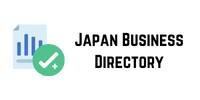Geometry change
Changes to entity group or entity type attributes
Fields defined as network attributes
Relationship structuring studies
Changes to terminal configuration information
Dirty areas can be accessed as a sublayer of the utility network and can be symbolized using basic symbology tools. The visualization of dirty areas can be turned on and off like other layers. For example, if you are making edits or data entry in your network and the dirty areas are visually disturbing to you, you can continue working by turning off the dirty area layer. Dirty areas will continue to form in the background while you are working. When you are finished working, you can get rid of dirty areas by validating all dirty areas at once.
To understand how dirty areas are created
they are symbolized using the status field. You can change these symbology settings just like you can for other layers. It allows you to run queries to highlight information on the map, such as the feature class the error is associated with or the type of error encountered. There can be one or more errors for a feature, represented by a single dirty area. Errors can occur for a variety of reasons, from identifying empty geometries to discovering invalid entity types in a submesh. For a detailed list of error conditions and solutions, see Error Management .
Because the rules that support the bypass linkedin search connection are checked when the network topology is validated or enabled, errors appear for any network features that violate feature restrictions or network rules after the network topology is validated or enabled.
Verifying the network topology maintains consistency
between what you see on the map and what is in the network topology. Since analytical operations are based on the network topology, if there are contaminated areas in your work area, the analysis and diagramming operations may produce unexpected results. For choose how you want to see the results example, if a trace analysis result passes through a contaminated area, there is no guarantee that the ao lists results will be consistent with what you see on the map. It is very important to use the “Verify” tool to ensure that the trthe results may be unreliable because the network status in the area covered by a contaminated area is unknown.

